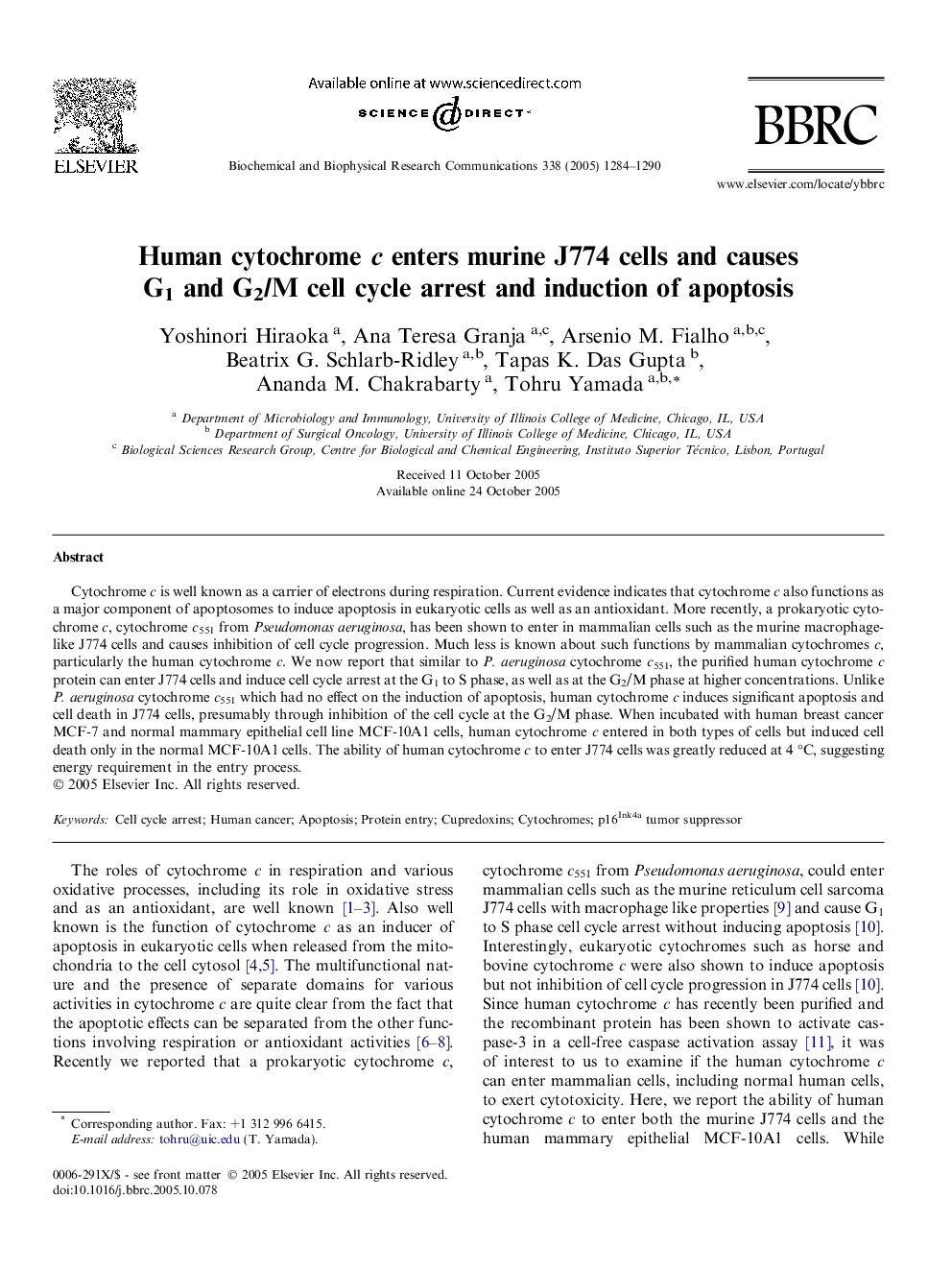| Article ID | Journal | Published Year | Pages | File Type |
|---|---|---|---|---|
| 10767958 | Biochemical and Biophysical Research Communications | 2005 | 7 Pages |
Abstract
Cytochrome c is well known as a carrier of electrons during respiration. Current evidence indicates that cytochrome c also functions as a major component of apoptosomes to induce apoptosis in eukaryotic cells as well as an antioxidant. More recently, a prokaryotic cytochrome c, cytochrome c551 from Pseudomonas aeruginosa, has been shown to enter in mammalian cells such as the murine macrophage-like J774 cells and causes inhibition of cell cycle progression. Much less is known about such functions by mammalian cytochromes c, particularly the human cytochrome c. We now report that similar to P. aeruginosa cytochrome c551, the purified human cytochrome c protein can enter J774 cells and induce cell cycle arrest at the G1 to S phase, as well as at the G2/M phase at higher concentrations. Unlike P. aeruginosa cytochrome c551 which had no effect on the induction of apoptosis, human cytochrome c induces significant apoptosis and cell death in J774 cells, presumably through inhibition of the cell cycle at the G2/M phase. When incubated with human breast cancer MCF-7 and normal mammary epithelial cell line MCF-10A1 cells, human cytochrome c entered in both types of cells but induced cell death only in the normal MCF-10A1 cells. The ability of human cytochrome c to enter J774 cells was greatly reduced at 4 °C, suggesting energy requirement in the entry process.
Related Topics
Life Sciences
Biochemistry, Genetics and Molecular Biology
Biochemistry
Authors
Yoshinori Hiraoka, Ana Teresa Granja, Arsenio M. Fialho, Beatrix G. Schlarb-Ridley, Tapas K. Das Gupta, Ananda M. Chakrabarty, Tohru Yamada,
